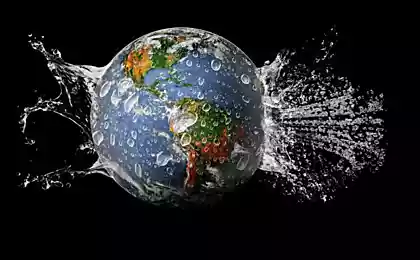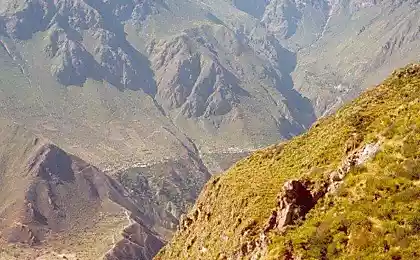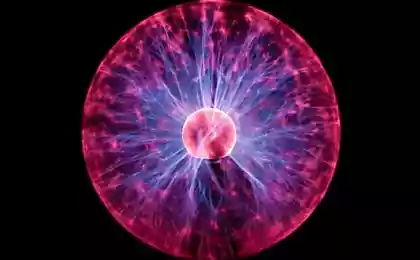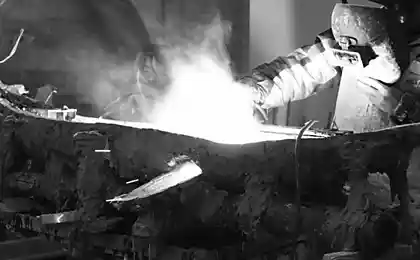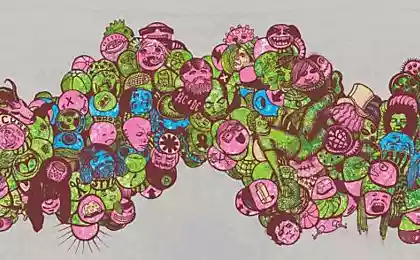836
Surreal place in the world (18 photos)
Near the town of Torrevieja on the south-west of Spain, is two salty lake water bright pink. In this lake live algae, which under certain conditions, produce the pigment of the exotic flowers.

Dead vlei or "dead marsh" Namibia, surrounded by sand dunes and dotted with dead trees, which has almost a thousand years.

Danakilskaya basin is located in Ethiopia, in Danakilskoy desert. Today it is the hottest inhabited places on the planet: the temperature ranges from 38 to 62 degrees Celsius.

Lake Natron is known that it covers salty crust is a deep red color. The lake is located in the north of Tanzania, on the border with Kenya. Red color - the result of vital activity of micro-organisms living in the lake.

Tsingy de Bemaraha Strict Nature Reserve - Nature Reserve in Madagascar, listed UNESCO World Heritage sites. Once the area was covered by water, which carved limestone "forest".

Antelope Canyon in Arizona - the most favorite photographers canyon in the American Southwest. Huge cracks in the sandstone cliffs with undulating walls are formed over many centuries because of floods that occur here every few years.

Geyser Fly - a little-known landmark, which is located in Nevada. It is not a natural phenomenon - it was formed by chance in 1916 as a result of drilling. Water is heated by geothermal energy comes out of the ground, dissolving the path of various substances, and thus created such colorful surface.

Huacachina - an oasis in the Peruvian desert. Around a small natural lake built a beautiful resort town.
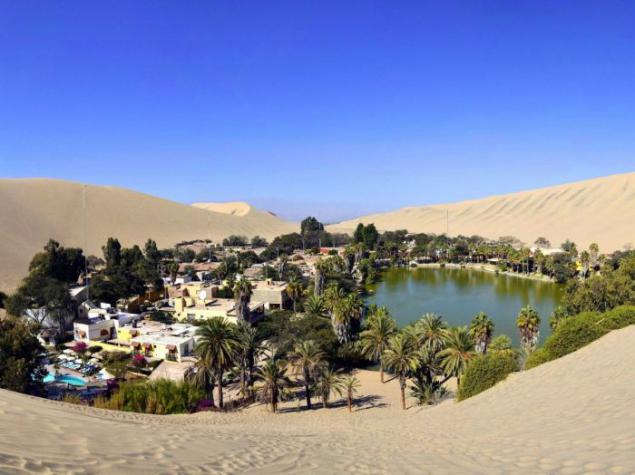
Badab-e Surt complex formations in the form of travertine terraces in the north of Iran. They were formed over thousands of years - the water of the two hot mineral springs, cooling, put off by the side of the mountain stages of such minerals.

Salinas Grandes - a huge salt desert in Argentina, its area is 6000 square kilometers. Saline is the bottom of a dry lake and is a popular destination for salt production.

At first glance, in the sand dunes of Lencois Maranhenses, is not unusual. However, the flat area is very low relative to sea level, so during the rainy season it is often flooded and formed ponds, where sometimes even the fish is found.

The ancient pagan city of Petra, the capital of the Nabataean kingdom, located in what is now Jordan. The famous city was built around the cliffs of red sandstone.

Rice Terraces China's Yunnan Province is covered hillsides. Different plant varieties produce different shades.

Valley of Cappadocia (Turkey) are dotted with millennial caves. Many of them still live people.

Cave of crystals was discovered in 2000. It is located at a depth of 300 meters below the city Nike in Mexico.

National Park, Bryce Canyon is located in southwest Utah. He is known for its unique multi-colored structures, called hoodoos. They are formed by the action of wind, water and ice.

These white sand drifts can be seen in the US state of New Mexico. They cover an area of 274 square meters.
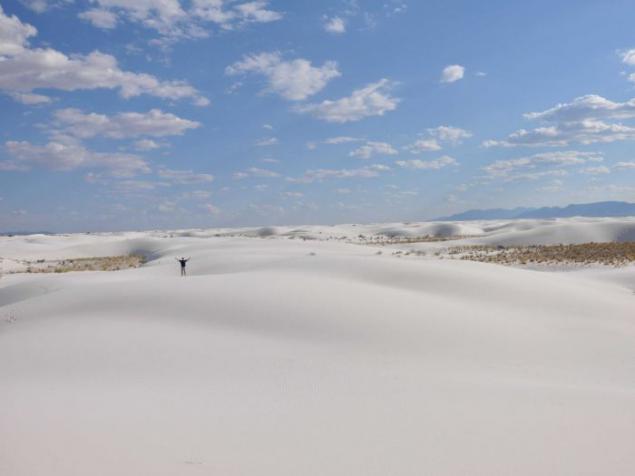
In the rainy season in Bolivia Salar Bottom covered with a thin layer of water, it turns out that's a kind of surreal.


Dead vlei or "dead marsh" Namibia, surrounded by sand dunes and dotted with dead trees, which has almost a thousand years.

Danakilskaya basin is located in Ethiopia, in Danakilskoy desert. Today it is the hottest inhabited places on the planet: the temperature ranges from 38 to 62 degrees Celsius.

Lake Natron is known that it covers salty crust is a deep red color. The lake is located in the north of Tanzania, on the border with Kenya. Red color - the result of vital activity of micro-organisms living in the lake.

Tsingy de Bemaraha Strict Nature Reserve - Nature Reserve in Madagascar, listed UNESCO World Heritage sites. Once the area was covered by water, which carved limestone "forest".

Antelope Canyon in Arizona - the most favorite photographers canyon in the American Southwest. Huge cracks in the sandstone cliffs with undulating walls are formed over many centuries because of floods that occur here every few years.

Geyser Fly - a little-known landmark, which is located in Nevada. It is not a natural phenomenon - it was formed by chance in 1916 as a result of drilling. Water is heated by geothermal energy comes out of the ground, dissolving the path of various substances, and thus created such colorful surface.

Huacachina - an oasis in the Peruvian desert. Around a small natural lake built a beautiful resort town.

Badab-e Surt complex formations in the form of travertine terraces in the north of Iran. They were formed over thousands of years - the water of the two hot mineral springs, cooling, put off by the side of the mountain stages of such minerals.

Salinas Grandes - a huge salt desert in Argentina, its area is 6000 square kilometers. Saline is the bottom of a dry lake and is a popular destination for salt production.

At first glance, in the sand dunes of Lencois Maranhenses, is not unusual. However, the flat area is very low relative to sea level, so during the rainy season it is often flooded and formed ponds, where sometimes even the fish is found.

The ancient pagan city of Petra, the capital of the Nabataean kingdom, located in what is now Jordan. The famous city was built around the cliffs of red sandstone.

Rice Terraces China's Yunnan Province is covered hillsides. Different plant varieties produce different shades.

Valley of Cappadocia (Turkey) are dotted with millennial caves. Many of them still live people.

Cave of crystals was discovered in 2000. It is located at a depth of 300 meters below the city Nike in Mexico.

National Park, Bryce Canyon is located in southwest Utah. He is known for its unique multi-colored structures, called hoodoos. They are formed by the action of wind, water and ice.

These white sand drifts can be seen in the US state of New Mexico. They cover an area of 274 square meters.

In the rainy season in Bolivia Salar Bottom covered with a thin layer of water, it turns out that's a kind of surreal.





